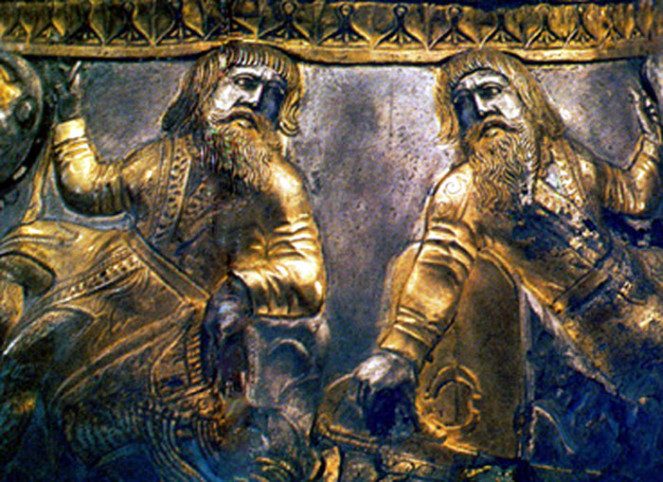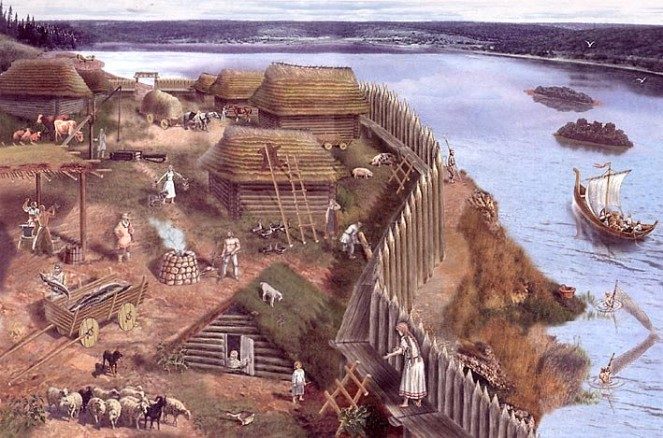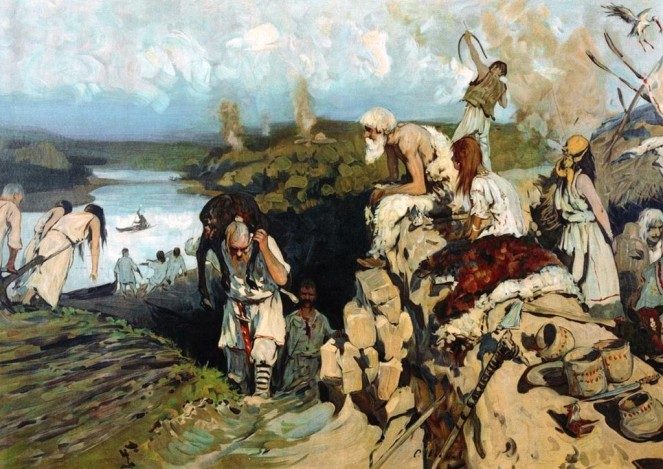For many centuries scientists have been breaking spears trying to understand the origin of the Russian people. And if the research of the past was based on archaeological and linguistic data, today even genetics have taken up the task.
From the Danube
Of all the theories of Russian ethnogenesis, the Danube one is the most famous. We owe its appearance to the chronicle collection "The Tale of Bygone Years", or rather to the centuries-old love for this source of Russian academicians.
The chronicler Nestor determined the initial territory of the Slavs' settlement by territories along the lower reaches of the Danube and Vistula. The theory of the Danube "ancestral home" of the Slavs was developed by such historians as Sergei Soloviev and Vasily Klyuchevsky.
Vasily Osipovich Klyuchevsky believed that the Slavs moved from the Danube to the Carpathian region, where an extensive military alliance of tribes arose, led by the Duleb-Volynian tribe.
From the Carpathian region, according to Klyuchevsky, in the 7th-8th centuries, the eastern Slavs settled in the East and North-East to Lake Ilmen. Many historians and linguists still adhere to the Danube theory of Russian ethnogenesis. A great contribution to its development was made at the end of the 20th century by the Russian linguist Oleg Nikolaevich Trubachev.
Yes, we are Scythians!

One of the most fierce opponents of the Norman theory of the formation of Russian statehood, Mikhail Lomonosov, leaned towards the Scythian-Sarmatian theory of Russian ethnogenesis, about which he wrote in his "Ancient Russian History". According to Lomonosov, the ethnogenesis of the Russians occurred as a result of the mixing of the Slavs and the Chudi tribe (Lomonosov's term is Finno-Ugric), and he named the interfluve of the Vistula and Oder as the source of the ethnic history of Russians.
Supporters of the Sarmatian theory rely on ancient sources, and Lomonosov did the same. He compared Russian history with the history of the Roman Empire and ancient beliefs with the pagan beliefs of the Eastern Slavs, finding a large number of coincidences. The fierce struggle with the adherents of the Norman theory is quite understandable: the people-tribe Rus, according to Lomonosov, could not have originated from Scandinavia under the influence of the expansion of the Vikings-Normans. First of all, Lomonosov opposed the thesis about the backwardness of the Slavs and their inability to independently form a state.
Gellenthal theory

An interesting hypothesis about the origin of Russians, promulgated this year by the Oxford scholar Garrett Gellenthal. Having done a lot of work on studying the DNA of various peoples, he and a group of scientists compiled a genetic atlas of the migration of peoples.
According to the scientist, two significant milestones can be distinguished in the ethnogenesis of the Russian people. In 2054 BC. e., according to Gellenthal, the trans-Baltic peoples and peoples from the territories of modern Germany and Poland migrated to the north-western regions of modern Russia. The second milestone is 1306, when the migration of the Altai peoples began, which actively interbred with representatives of the Slavic branches.
Gellenthal's research is also interesting in that genetic analysis proved that the time of the Mongol-Tatar invasion had practically no effect on Russian ethnogenesis.
Two ancestral homelands

Another interesting migration theory was proposed at the end of the 19th century by the Russian linguist Alexei Shakhmatov. His theory of "two ancestral homelands" is also sometimes called Baltic. The scientist believed that initially the Balto-Slavic community emerged from the Indo-European group, which became autochthonous in the Baltic. After its collapse, the Slavs settled on the territory between the lower reaches of the Neman and the Western Dvina. This territory became the so-called "first ancestral home". Here, according to Shakhmatov, the Proto-Slavic language was formed, from which all Slavic languages originated.
Further migration of the Slavs was associated with the great migration of peoples, during which at the end of the second century AD the Germans went south, liberating the Vistula River basin, where the Slavs came. Here, in the lower basin of the Vistula, Shakhmatov defines the second ancestral home of the Slavs. Already from here, according to the scientist, the division of the Slavs into branches began. The western one went to the Elbe region, the southern one split into two groups, one of which inhabited the Balkans and the Danube, the other - the Dnieper and Dniester. The latter became the basis of the East Slavic peoples, to which the Russians also belong.
We are local

Finally, one more theory, different from migratory ones, is the autochthonous theory. According to her, the Slavs were an indigenous people inhabiting eastern, central and even part of southern Europe. According to the theory of Slavic autochthonism, the Slavic tribes were the indigenous ethnos of a vast territory - from the Urals to the Atlantic Ocean. This theory has rather ancient roots and many supporters and opponents alike. This theory was adhered to by the Soviet linguist Nikolai Marr. He believed that the Slavs did not come from anywhere, but formed from tribal communities that lived in vast territories from the Middle reaches of the Dnieper to the Laba in the West and from the Baltic to the Carpathians in the south.
The autochthonous theory was also adhered to by Polish scientists - Klechevsky, Pototsky and Sestrentsevich. They even led the lineage of the Slavs from the Vandals, basing their hypothesis on the similarity of the words "Wends" and "Vandals". Of the Russians, the origin of the Slavs Rybakov, Mavrodin and Grekov was explained by the autochthonous theory.




